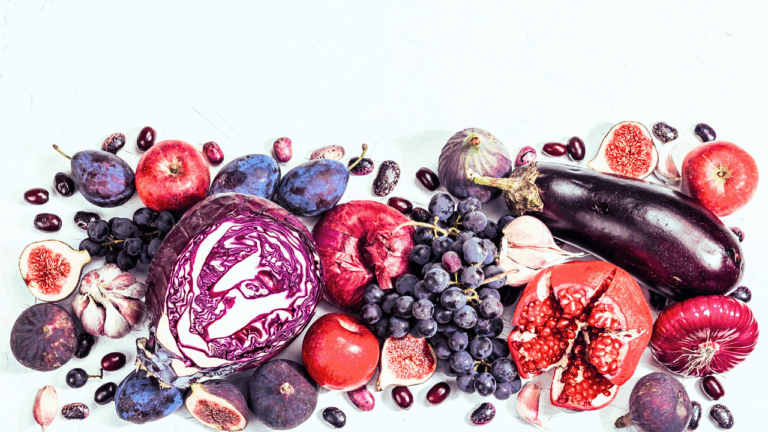Polyphenols and Glucose Management
Summary
Polyphenols are phytonutrients with beneficial anti-inflammatory, antioxidant, chemopreventative, and neuropreventative activity, as well as influence in glucose metabolism.
Health benefits associated with consuming plants are in part thanks to phytonutrients like polyphenols, structurally diverse compounds associated with beneficial anti-inflammatory, antioxidant, chemopreventive, and neuroprotective activity. One area of beneficial influence is in glucose metabolism, with studies providing evidence that polyphenols may be beneficial for addressing metabolic syndrome and improving glucose management.
Dietary Polyphenols & Glucose Homeostasis
Dietary polyphenols influence digestion, absorption, and metabolism of starch and sucrose, important dietary carbohydrates primarily digested in the upper GI tract. Diets high in starch and sucrose promote an unhealthy glycemic response associated with metabolic conditions, characterized by high levels of sugar and insulin in the blood as well as other abnormal hormonal and metabolic changes.1
Polyphenols support homeostasis in carbohydrate metabolism by balancing the glycemic response following a meal as well as fasting blood sugar levels. Polyphenols also influence insulin secretion and sensitivity. Additionally, studies show polyphenols inhibiting two enzymes vital for metabolizing glucose from dietary carbohydrate: α-amylase and α-glucosidase, slowing down glucose release and absorption and ultimately reducing high blood sugar following a meal.1
Polyphenol involvement in glucose homeostasis is linked to prevention of insulin resistance, metabolic syndrome, and type 2 diabetes.1 Accordingly, individuals at risk of type 2 diabetes are encouraged to eat more plant foods, which of course are rich sources of polyphenols.
Microbiome & Polyphenols
Colonic microbiota of the gastrointestinal (GI) tract metabolize and modulate a majority of dietary polyphenols, with just a small number of these phytonutrients being directly absorbed in the upper GI tract. Microbial metabolism must occur before the majority of polyphenols can be absorbed elsewhere. While microbiota do impact polyphenol biological activity, other dietary and endogenous factors, such as food consumed simultaneously with dietary source of polyphenols, have an influence as well.2-3
Diverse Polyphenols, Diverse Health Benefits
Different plant species have different metabolite profiles, each associated with their own unique biochemical profile.4 Several plant based foods provide rich sources of polyphenols, with a select few extensively studied in the context of metabolic syndrome and type 2 diabetes:1
- Coffee (phenolic acids)
- Tea (condensed tannins)
- Soy (isoflavonoids)
- Grape (resveratrol)
- Apple (flavonoid)
- Berries (anthocyanins)
- Buckwheat (Rutin, Quercetin)5
- Oat (Avenanthramides)6
- Alfalfa (Apigenin)7
- Beetroot (Betalains)8
- Various herbs
- Hanhineva, K., et al. (2010). Impact of dietary polyphenols on carbohydrate metabolism. Int J Mol Sci, 11(4): p. 1365-402.
- Liu, R.H. (2003). Health benefits of fruit and vegetables are from additive and synergistic combinations of phytochemicals. Am J Clin Nutr, 78(3 Suppl): p. 517s-520s.
- Lila, M.A. (2007). From beans to berries and beyond: teamwork between plant chemicals for protection of optimal human health. Ann N Y Acad Sci, 1114: p. 372-80.
- Crozier, A., Jaganath, I.B., & Clifford, M.N. (2009). Dietary phenolics: chemistry, bioavailability and effects on health. Nat Prod Rep, 26(8): p. 1001-43.
- Kreft, M. (2016). Buckwheat phenolic metabolites in health and disease. Nutr Res Rev, 29(1): p. 30-9.
- Sang, S. & Chu, Y. (2017). Whole grain oats, more than just a fiber: Role of unique phytochemicals. Molecular Nutrition & Food Research, 61(7): p. 1600715.
- Seida, A., et al. (2015). Evaluation of Medicago sativa L. sprouts as antihyperlipidemic and antihyperglycemic agent. Pak J Pharm Sci, 28(6): p. 2061-74.
- Clifford, T., et al. (2015). The potential benefits of red beetroot supplementation in health and disease. Nutrients, 7(4): p. 2801-22.







